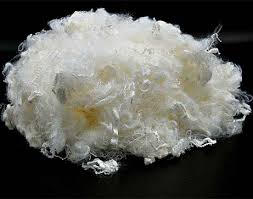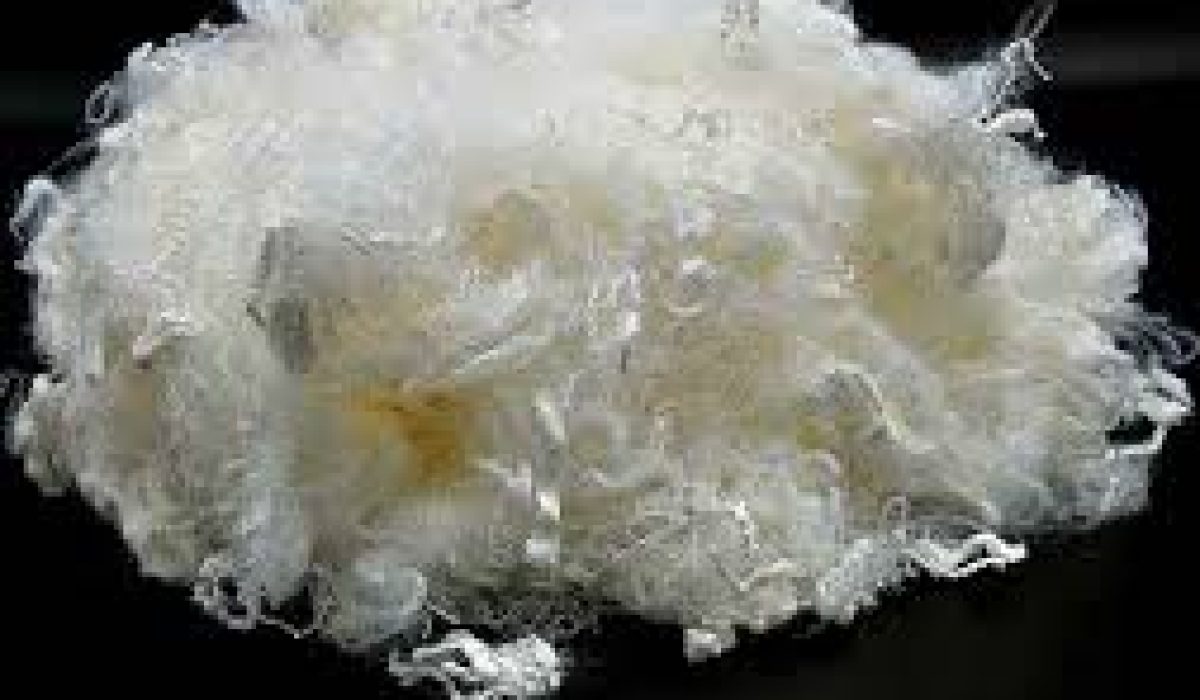Competitive Landscape and Market Share of the Meta-Aramid Fiber Industry

China’s meta-aramid fiber industry has formed a pyramid-shaped competitive structure, with leading enterprises possessing global competitiveness at the top, specialized enterprises focusing on niche markets in the middle, and numerous new entrants attempting to enter this high-barrier industry at the bottom. This competitive landscape reflects the industry’s characteristics of high technical barriers and high capital investment and suggests that market concentration may further increase in the future.
Tayho Advanced Materials holds a dominant position in China’s domestic meta-aramid fiber market. In 2022, its output exceeded 8,000 tons, accounting for over 80% of total domestic supply. The company not only leads in scale but also has obvious advantages in technical level, product quality, and brand influence. Tayho Advanced Materials’ meta-aramid fiber products have passed multiple international certifications and can enter global high-end supply chains, competing directly with international giants such as DuPont and Teijin. In terms of global market share, Tayho Advanced Materials ranks second with 26.1%, following only DuPont of the United States (46.0%).
- SRO Group: As China’s second-largest meta-aramid fiber producer, SRO Group mainly adopts a differentiated competition strategy, avoiding direct competition with Tayho Advanced Materials in high-end markets and instead concentrating resources on mid-range application fields such as industrial filtration materials. The company has developed specific advantages in meta-aramid fiber for high-temperature filter materials, with products offering high cost-performance ratios and stable customer bases in domestic cement, metallurgy, and other industries.
- International Giants: DuPont of the United States and Teijin of Japan still hold important positions in China’s high-end meta-aramid fiber market by virtue of their profound technological accumulation and brand advantages. Particularly in fields such as electrical insulation and high-end protective equipment, imported products still account for a considerable proportion of market share. These international giants are actively expanding into the Chinese market by establishing production bases in China or cooperating with local enterprises. For example, DuPont has established cooperative relationships with several Chinese enterprises in fields such as aramid paper.
Market barriers are an important reason for the relative stability of the meta-aramid fiber industry’s competitive landscape. The industry faces multiple barriers: first, technical barriers—the polymerization and spinning processes of meta-aramid fiber are complex and require long-term technological accumulation and talent reserves; second, capital barriers—large-scale production requires huge fixed asset investments; third, certification barriers—particularly in high-end application fields such as safety protection and electrical insulation, products must pass strict professional certifications to enter the market; fourth, customer barriers—large downstream enterprises typically establish long-term stable cooperative relationships with suppliers, making it difficult for new entrants to obtain sufficient orders in the short term.
Price competition is particularly fierce in low-end application markets. Due to the rapid growth of domestic meta-aramid fiber production capacity and the relatively lagging development of high-end applications, oversupply situations occur in low-end markets such as industrial filtration materials, leading to frequent price wars among enterprises. In 2023, the average price of domestic meta-aramid paper decreased by RMB 5,400/ton compared to 2022, reflecting the pressure of market competition. To address this challenge, leading enterprises are accelerating their transition to high-value-added products. For example, Tayho Advanced Materials is actively developing specialty products such as dyeable meta-aramid fiber and high-strength meta-aramid fiber to enhance profitability and market competitiveness.
Table: Comparison of Market Positions of Major Meta-Aramid Fiber Producers Worldwide
| Enterprise Name | Country | Production Capacity (tons/year) | Global Market Share | Market Positioning |
| DuPont | USA | 22,000 | 38.5% | Global leader, high-end markets |
| Tayho Advanced Materials | China | 17,000 | 29.8% | Comprehensive competition, rapid growth |
| Teijin | Japan | 4,900 | 8.6% | Focus on high-end, leading technology |
| SRO Group | China | 4,500 | 7.9% | Niche market expert |
| Toray Hyosung | South Korea | 3,200 | 5.6% | Mainly regional markets |
Industrial chain integration has become an important strategy for enterprises to enhance competitiveness. Leading enterprises are building more complete and efficient industrial chain systems by extending upstream to raw materials or downstream to finished products. Tayho Advanced Materials not only produces meta-aramid fiber but also produces aramid paper through its subsidiary Mingtai New Materials, forming industrial chain synergy. Similarly, downstream application enterprises are attempting to penetrate the midstream materials field through strategic cooperation or independent research and development to ensure stable supply of key raw materials. This trend of industrial chain integration will further change the industry’s competitive landscape, and enterprises with full industrial chain capabilities will gain greater development space.
Future Development Trends and Growth Drivers of the Meta-Aramid Fiber Industry
China’s meta-aramid fiber industry is at a critical juncture of transformation and upgrading. In the coming years, it will usher in an important period of technological breakthroughs, application expansion, and market landscape reshaping. With increasing national policy support for the new materials industry and the rapid development of downstream high-end manufacturing, the meta-aramid fiber industry is expected to maintain steady growth and occupy a more important position in the global industrial chain.
In terms of market demand, the global meta-aramid fiber industry is maintaining steady growth, with sales increasing from USD 558 million in 2017 to USD 857 million in 2023, representing a compound annual growth rate (CAGR) of 6.32%. Global sales are expected to reach approximately USD 928 million in 2024. In terms of sales volume, global meta-aramid fiber industry sales reached 47,300 tons in 2023 and are expected to increase to about 50,000 tons in 2024. The growth rate of the Chinese market is expected to be higher than the global average, with demand reaching about 14,200 tons by 2025, mainly driven by the rapid expansion of high-end application fields such as safety protection and electrical insulation.
- Technological Development: Future meta-aramid fiber technology will develop in three main directions: high performance, multifunctionality, and green production. In terms of high performance, improving fiber strength, temperature resistance, and durability is the focus of research and development, such as developing meta-aramid fiber varieties that can be used for long periods above 250°C. In terms of multifunctionality, through means such as nanotechnology modification and surface treatment, meta-aramid fiber can be endowed with additional functions such as antistatic, antibacterial, and dyeable properties. In terms of green production, optimizing processes, reducing energy consumption, and minimizing solvent use will become important directions for technological improvement, in response to the national “dual carbon” strategy and environmental protection requirements.
- Application Fields: The consumption structure of meta-aramid fiber in China will undergo significant changes. The current situation where industrial filtration materials account for an excessively high proportion (63%) will gradually change, and the proportions of safety protection and electrical insulation fields are expected to increase. This transformation is mainly driven by three factors: first, the strengthening of national safety production supervision, promoting the upgrading of personal protective equipment; second, the development of industries such as new energy and rail transit driving the growth of demand for high-end insulation materials; third, the improvement of technical levels of domestic enterprises, enabling the production of products that meet the requirements of high-end applications. In particular, aramid paper, as an electrical insulation and honeycomb structural material, has broad application prospects in fields such as new energy power generation and aerospace. The market size of meta-aramid paper in China is expected to reach RMB 2.916 billion by 2030.
Capacity expansion remains an important feature of the industry’s recent development. Tayho Advanced Materials plans to increase its total meta-aramid fiber production capacity to 20,000 tons by 2025, further narrowing the gap with DuPont; SRO Group and other enterprises also have moderate capacity expansion plans. At the same time, industry consolidation may accelerate, and enterprises with backward technology and small scale will face greater competitive pressure or be acquired by leading enterprises. Globally, meta-aramid fiber production capacity will remain highly concentrated, but the market share of Chinese enterprises is expected to further increase.
The policy environment will continue to support the development of the meta-aramid fiber industry. Policy documents such as the “Guiding Opinions on Accelerating the Transformation and Upgrading of Traditional Manufacturing Industries” explicitly propose promoting the development of the new materials industry and facilitating the high-end, intelligent, and green transformation of manufacturing. These policies will indirectly drive the demand for high-performance materials such as meta-aramid fiber. At the same time, increasingly stringent environmental regulations will encourage more industries to adopt environmentally friendly high-temperature filtration materials such as meta-aramid fiber to replace traditional materials, creating new market space.
Table: Key Drivers for the Future Development of China’s Meta-Aramid Fiber Industry
| Driver Category | Specific Content | Impact Level | Time Effect |
| Technological Innovation | High performance, multifunctionality, green processes | High | Medium to long term |
| Application Expansion | Safety protection, electrical insulation, honeycomb materials | High | Medium term |
| Policy Support | New materials industry policies, safety and environmental regulations | Medium to high | Continuous |
| International Competition | Import substitution, export growth | Medium | Medium term |
| Industrial Chain Integration | Upstream-downstream synergy, industrial clusters | Medium | Long term |
Internationalization development will become an important strategic direction for Chinese meta-aramid fiber enterprises. As domestic enterprises improve their technical levels and expand production capacity, export markets will become increasingly important. On one hand, Chinese enterprises can leverage cost advantages to expand into developing country markets; on the other hand, through technological upgrades and product improvements, they can gradually enter high-end markets in Europe and the United States, competing directly with international giants. At the same time, overseas mergers and acquisitions may also become an important means for Chinese enterprises to acquire advanced technology and expand international channels, such as acquiring overseas specialized application development enterprises or technology-based companies.
Risks and challenges should not be overlooked. The meta-aramid fiber industry faces major risks including: the risk of overcapacity in low-end products—if enterprises blindly expand production without sufficient development of high-end applications, the overall profitability of the industry may decline; technological breakthrough risks—if competitors make breakthroughs in key technologies, the existing market landscape may change; raw material price fluctuation risks—the prices of key chemical raw materials required for meta-aramid fiber production are affected by various factors and may squeeze corporate profit margins. To address these challenges, enterprises need to strengthen technological innovation, optimize product structures, improve operational efficiency, and establish more robust supply chain systems.
Conclusions and Strategic Recommendations
After years of development, China’s meta-aramid fiber industry has established a complete industrial system, forming a competitive landscape led by Tayho Advanced Materials with the participation of multiple enterprises. The total production capacity has reached 26,000 tons/year, making it an important part of the global meta-aramid fiber supply chain. The current domestic market is characterized by low-end applications as the mainstay and gradual breakthroughs in high-end fields, with industrial filtration materials accounting for as much as 63%, while safety protection and electrical insulation fields account for 26% and 5%, respectively. With technological progress and application expansion, China’s meta-aramid fiber industry is at a critical period of transformation and upgrading, with huge potential for future development but also facing many challenges.
At the enterprise level, participants with different market positions should adopt differentiated development strategies. For industry leaders such as Tayho Advanced Materials, they should give full play to their scale and technological advantages, focus on breaking through high-end application markets, narrow the gap with international giants, and strengthen industrial chain integration to enhance overall competitiveness. For small and medium-sized meta-aramid fiber producers, it is recommended to follow a specialized development path, focusing on specific niche markets or application fields to form differentiated competitive advantages and avoid direct competition with leading enterprises in mainstream markets. For potential new entrants, given the industry’s high barriers, it is recommended to enter through mergers and acquisitions or technical cooperation rather than building capacity from scratch.
- Technological Innovation: Enterprises should increase R&D investment, focusing on breakthroughs in production technologies for high-performance meta-aramid fiber, dyeable fiber, aramid paper, and other high-end products to improve added value and market competitiveness. Industry-university-research cooperation is an effective way to accelerate technological innovation. Enterprises can establish joint laboratories or R&D centers with universities and research institutions to jointly tackle key technical challenges.
- Application Development: Actively expand applications in high-end fields such as new energy, aerospace, and national defense, reducing dependence on traditional markets such as industrial filtration materials. Downstream application development requires close cooperation with end-users to gain an in-depth understanding of the special requirements of application scenarios and provide customized solutions.
- Internationalization Layout: Chinese meta-aramid fiber enterprises should focus on global markets. On one hand, they can expand exports to developing countries; on the other hand, they can enter high-end markets in Europe and the United States through mergers and acquisitions or cooperation. In the process of internationalization, attention should be paid to intellectual property protection, product quality certification, and brand building, complying with international rules and standards.
At the policy level, it is recommended that government departments continue to strengthen support for the high-performance fiber materials industry, encouraging enterprise technological innovation and industrial upgrading through science and technology projects, tax incentives, and other means. At the same time, improve industry standards and certification systems to promote the standardized application of meta-aramid fiber in fields such as safety protection and electrical insulation. In terms of environmental regulation, a balance should be struck between environmental protection and industrial development, avoiding “one-size-fits-all” control measures and allowing reasonable time for enterprise technological transformation and upgrading.
In terms of investment decisions, the meta-aramid fiber industry has good long-term investment value, but appropriate investment timing and targets need to be selected. It is recommended to focus on the following types of enterprises: first, leading enterprises with core technological advantages and complete product lines; second, specialized enterprises with expertise and stable customer bases in specific application fields; third, enterprises actively extending into downstream high-value-added products for industrial chain integration. Investors should fully understand the industry’s technical risks and market competition intensity and conduct prudent due diligence and risk assessments.
Industry collaborative development is crucial for enhancing the overall competitiveness of China’s meta-aramid fiber industry. It is recommended to establish industry alliances or associations to strengthen communication and coordination among enterprises, avoid vicious competition, jointly develop key common technologies, formulate industry standards, and maintain market order. At the same time, upstream and downstream enterprises in the industrial chain should strengthen cooperation to build stable and efficient supply chain systems, improve resource allocation efficiency, and jointly respond to international market competition.
Looking ahead, with the in-depth implementation of China’s manufacturing transformation, upgrading, and high-quality development strategies, meta-aramid fiber, as a key strategic material, will see continuous growth in market demand and expanding application fields. It is estimated that by 2025, the demand for meta-aramid fiber in China will reach about 14,200 tons, and the market size will further expand. Under the joint effects of policy support, technological progress, and market drivers, China’s meta-aramid fiber industry is expected to achieve leapfrog development from “following” to “running alongside” and even “leading” in some fields, making greater contributions to national security and economic development.



